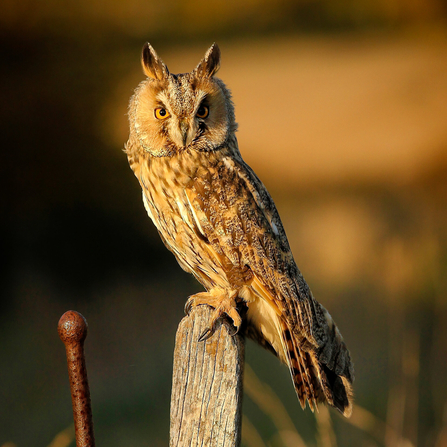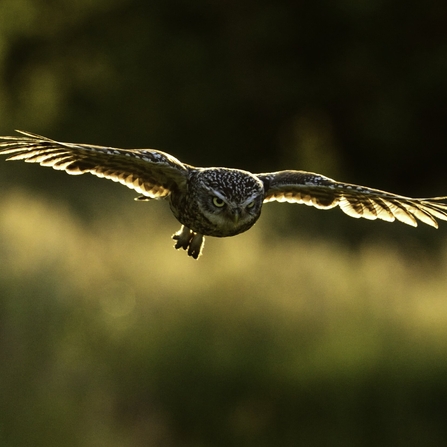Pick your way around fields or along a cliff top path, the ground cold and hard and the sky clear, fence posts glinting in the frozen morning. You might catch a blur of pale gold swoop down out of the gloam before the ghostly figure flaps slowly away on broad wings. Winding through a woodland, the pinkening sky colouring behind the higher limbs of bare trees, you might reach a thicket and hear a low hoot overhead or away in the distant trees.
Owls are some of our most captivating birds. Easier to spot as they hunt at dawn and dusk, they retain a sense of mystery. There are five species of owl commonly found in Yorkshire, all of which you may be lucky enough to spot yourself if timing and luck are on your side - Yorkshire Wildlife Trust’s reserves offer ample opportunities.
The barn owl, a pale and slender owl of white and golden brown, has a white, heart-shaped facial disk with dark eyes which makes it very distinctive. They are usually seen over grassland or farmland, and often fly back and forth over fields at dawn and dusk, although you may spot one hunting during the day if food has been scarce. They make a ghostly screeching sound which can be a bit disconcerting if unexpected!
Try North Cave Wetlands, Wheldrake Ings or Ashes Pasture nature reserves for a glimpse of a barn owl – dawn or dusk if possible.





